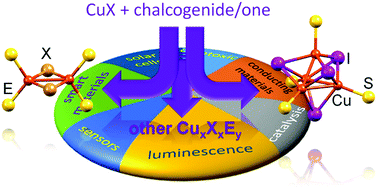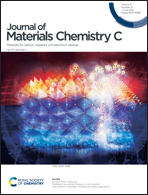Properties and applications of copper halide-chalcogenoether and -chalcogenone networks and functional materials
Abstract
When copper(I) halide salts react with various mono- and poly-chalcogenoether and -chalcogenone ligands, two general shapes of neutral polynuclear CuxXxEy species (E = S, Se, Te; X = Cl, Br, I; x = 2–8) are formed within the resulting 0–3D coordination materials. These polymetallic forms exhibit either globular or quasi-planar motifs, mainly closed cubane Cu4I4S4 and rhomboid Cu2X2S4, respectively, but not exclusively. Depending on the shape of these polynuclear species and the dimensionality of the network, their properties and applications are profoundly different. These materials include luminescent and electroactive materials, sensors for small molecules, thermo-, electro- and photocatalysts, therapeutic and antibacterial species, electrically conducting solids, active components in solar cells and light emitting diodes, and functional and stimuli-responsive materials (such as self-healing). Specific properties such as occurrence of solid-to-solid phase transition and thermo- and mechano-chromism have also been observed. This work summarizes these properties and applications and presents their current research directions.



 Please wait while we load your content...
Please wait while we load your content...